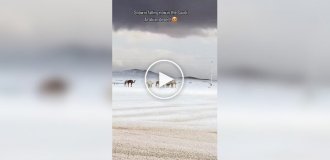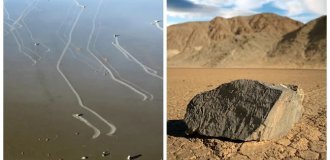What could be simpler than a lighter? You will say matches and you will be wrong. The match appeared later than the first lighters... The first semblance of a lighter in the form of a complete mechanism was developed by Leonardo da Vinci. His original device for producing fire consisted of many springs and wheels connected by chains to a flint. However, this machine was very cumbersome and had a terrifying appearance, so Leonardo’s invention did not gain popularity.
Only with the advent of fashion for smoking tobacco did scientists begin to seriously think about completely automating the process of lighting a fire. At the beginning of the 19th century, German chemist Johann Wolfgang Dobereiner invented the first tabletop lighter powered by hydrogen.
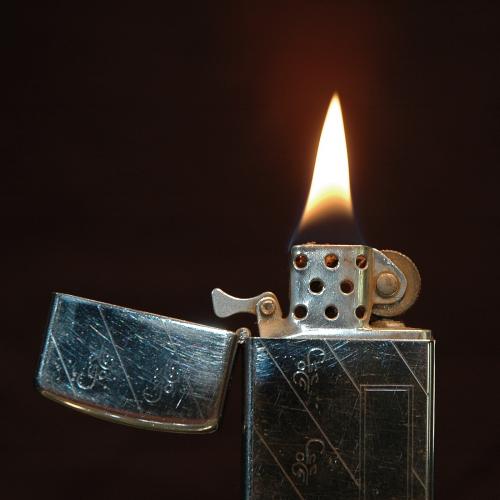

Instead of flint and steel, the lighter used tiny particles of platinum, which, under the influence of oxygen, quickly became heated, igniting flammable hydrogen. The flame turned out to be powerful and even, however, there were few people willing to use such a lighter - if handled carelessly, it exploded with wild force. The device of the Dobereiner lighter.

Demonstration of the lighter by Dobereiner.

By the middle of the 19th century, the lighter was doomed to be created. By this time, cigarettes appeared, and moreover, they were becoming fashionable. If a lighter is not needed to light a pipe (even harmful in some cases - it can burn the cup), then the cigarette insists on a lighter. And, of course, right according to Marx - demand gave birth to supply, and a marvelous mechanism appeared - a wick moistened with a flammable substance, metal wheels striking a spark from flint, in general, the first practically safe lighter. The lighter in its familiar form was invented only in last century. Previously, technological progress did not allow us to implement this thing properly, to make it reliable, trouble-free and safe. At first, lighters were made according to the principle of matches, that is, a steel wheel, playing the role of a chair, struck sparks from a silicon rod, which ignited gasoline. Lighters moved towards their modern form in 1903, when Karl Auer von Welsbach, an Austrian chemist, found the optimal alloy composition for making flints for lighters (iron with cerium).

It is curious that von Welsbach did not come up with any theory, he came up with everything exclusively experimentally, and his composition is used to this day. The first lighters were quite large in size, there were even special tabletop lighters that were used at home, cost fabulous money and were creations art.

Later, simpler and more uncomplicated cheap pocket lighters gained popularity. Patent for the IMCO lighter device. Austria 1920. Patent 105107

IMCO Triplex 1930.

Bowers.
Bowers Tool And Die Company was founded in 1928 by Ernest Bowers in Kalamazoo, Michigan, and initially its main activity was related to metal processing. Ernest was a heavy smoker, and therefore the company subsequently began to produce lighters under the brand “ Kalamazoo Slide Sleeve Lighter. The lighter was a great success! “Kalamazoo Slide Sleeve Lighter” 1930.

Ernest's son Fredrik took the lighters produced by the company to a new level, and they began to be sold throughout the country. Several new models were introduced to the market in the 1930s, with the “Storm Master” being particularly popular. The company was producing about 4,000 lighters a day, and could not keep up with the growing demand for them. In the 1940s, the Army-Navy military model was released, and the Bowers company provided 55% of all government purchases of lighters to supply American soldiers at the front. Little is known about this, but in terms of sales at that time it overtook even Zippo! Bowers lighter device. 1949


Lighters of that time are not particularly original, but they are reliable, and these examples can still be found for sale on Ebay in very good condition:
Zippo.
Zippo was founded by George Blaisdell. He began by obtaining an exclusive license to import Austrian IMCO lighters into the United States. I couldn’t sell a single one from the first batch, but I realized what exactly needed to be improved in order for the lighters to be sold and in demand. As a result, he created his own model, truly legendary, “windproof” Z
ippo.

Since then, the company's motto has been a lifetime guarantee of quality in all weather conditions. By the way, it was the Zippo lighter, along with cowboys and horses, that Philip Morris used in its large-scale advertising campaign for Marlboro cigarettes. Some aesthetes reproach the company for the invariability of its simple “rough” form, but, in fact, this is what Blaisdell himself wanted. Using Zippo lighters, like paintings in an art museum, you can trace the history of all of America - its military, sports and even scientific achievements. The company's designers instantly responded to any events and reflected them in engravings, enamel paintings, and simply in inscriptions on the cases. Such variety and quite affordable prices (even for old samples) make it very attractive to collect lighters from this company, which is what true Zippo fans do with success. And one more thing: Zippo makes only gasoline lighters. Zippo advertising. 
There is a legend that the letter designation on the bottom of modern lighter models indicates the pitch of the sound made by the lid when opening. In fact, oddly enough, different models of lighters produce a sound of different pitches when opening the lid (with the exception of models with linings on the body, from - why do they make a dull click rather than a ringing sound), and for some modern models this statement is true. For example, a lighter with a stamp when opened gives the note “A”, with the letter b - the note “B flat”, with the letter c - the note “do”, with the letter d - the note “re” and so on until h - “si”. This version has not been confirmed in any way by the zippo company itself, but nevertheless, upon verification, it turns out that the rule really works for certain models of lighters. All zippo lighters are manufactured only at the factory in Bradford and nowhere else. The only exception was the company's subsidiary factory in Niagara Falls, Canada, which produced lighters from 1949 to 2002. Lighters produced by this factory were marked with the inscription “niagara falls, ontario” on a stamp, and the production date code began to be printed on them only in 1987. When the factory closed in 2002, a limited (25,000 pieces) batch of collectible lighters with silver plating was produced, all lighters of this release were numbered. From the 1930s to the end of the 1950s. Engravings on Zippo lighters were made using a special device - a pantograph.
Dunhil
In 1923, the first Alfred Dunhill lighter appeared, which was later given the name Unique. The first Unique models were indeed elegant - as a rule, they had a gold or silver plated case and were decorated with crocodile or ostrich skin. By the time Wise and Greenwood proposed their invention to the company, the company already had a fairly well-known name and subsequently established a reputation for being one of the most sophisticated in the art and design of its lighters.

Diplomat is a Swiss company founded in 1956.

This company is distinguished by high quality and impeccable operation of its mechanisms (just like Swiss watches). At the same time, the design of the lighters is also impeccable and distinguished by sophistication. The company produces very elegant gift sets, for example, a lighter and a pen, as well as other accessories necessary for every man who cares about his image. Dupont is a famous French company that produces not only lighters, but also a complete accessory set for a business man. The lighters are elegant, high quality and amazing in design. As a rule, they have a gold or silver plated case, decorated with leather or engraving.

Ronson
The Ronson company was founded in New York in 1886 by Louis Aronson, originally called “The Art Metal Works” and engaged in the manufacture of metal table lamps, figurines and other decorative items. In 1913, Louis Aronson received the first patent for a lighter, and since then the history of the production of lighters under this brand begins. In 1926, the Ronson Banjo automatic lighter was released, which at that time was a revolutionary product: for the first time, a fire could be lit and extinguished by pressing one finger (in our time this may make you smile, but everything was once invented for the first time.C Since then, Ronson has produced an incredible array of different models of petrol lighters, tabletop and pocket, simple and luxurious, many of them true works of art, striking in a variety of sizes and shapes, with styles ranging from elegant art deco to brutal diesel punk.


Ronson's main creature models
There were dozens, and there were hundreds of their varieties. Ronson Varaflame automatic lighter, 1957.

Ronson's 1932 lighter patent.

Advertisement for Ronson lighters.

A feature of some Ronson lighters was a retractable wind shield. Automatic lighters were widespread (press - it lights up, release - it goes out). The Japanese lighter manufacturer Amatti began its activities in 1972 and currently occupies a prominent place in almost all price segments. By the way, this company is so far the only one that has offered a special brand of its products for the Russian market - Angara lighters.
Swedish Match, which has been producing matches since 1917 and reached a quarter of the world market share by the end of the 80s, entered the competition in the lighter market in the second half of the 80s after acquiring the English company Wilkinson Sword. Their Cricket brand very quickly gained popularity in the segment of inexpensive lighters.

Companies such as Colibri, Saffo, Ronson, Thorens and La Nationale are quite widely known throughout the world. We should also pay tribute to companies operating in a more affordable price range that produce disposable gas lighters: Swedish Match (Cricket brand), BIC, Amatti. The products of these companies are aimed at the mass consumer, are known in many countries and are extremely popular.


By the way, piezo lighters were used to ignite gas lamps already in the 19th century.

German lighter of World War II.

Lighters in the USSR.
In the USSR, they tried to produce copies of popular lighters, in quality at least close to the products of the best companies. Let's start with the Ogonyok lighters. The prototype was Colibri Monopol.
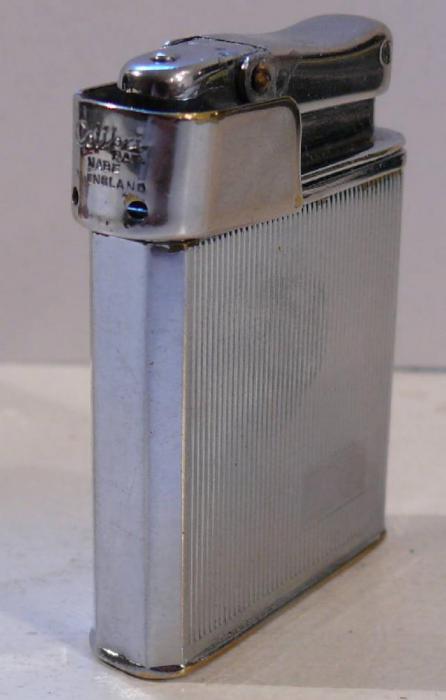
The USSR was not particularly concerned with agreeing on the acquisition of a patent or compliance with other conditions of intellectual property and launched it into production. The production of lighters under this TM (what else could it be called) approximately began in the early 60s and is marked by the most recognizable lighter with the profile of Yu.A. Gagarin.

Based on how often it comes across now, almost half a century later we can assume that it was produced in a multi-million circulation. There are slight differences between batches in the design applied to the bottom. There are both a clean surface with only the inscription “Spark” and a badge, and those covered with an ornament of stars. The “Comintern” lighter is a complete copy of the IMCO lighter. 30s.

Pistol-lighter Tbilisi. Gasoline, USSR edition of the 50s. The original is not installed.

Gasoline lighter "KREMLIN MOSCOW". 70-80 years old. IMCO clone. (One of the oldest lighter manufacturer). Cost 3 rubles. 50k. (IMCO from $10 to $50).
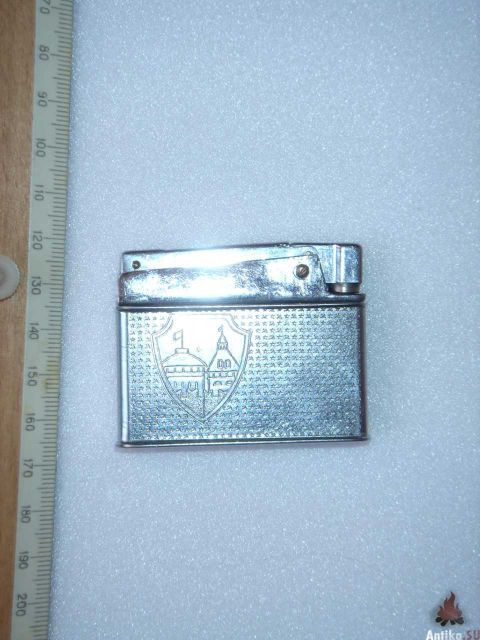
Another amazing IMCO clone. Gas lighter from the USSR. The production of LenEmalEr (according to the abbreviation, it seems to be Leningrad Enamel, But what does Er mean?) has a quality mark.


Petrol lighter EBL 15 SKILTAVA. Riga Jewelry Factory. USSR issue of the 70s. Another soviet IMCO.

Musical gasoline lighter from the USSR era. Plays the melody "Let there always be me").

Original Hadson Blue Bird.


A very unusual Soviet-made lighter "Kiiv".

and this is her original Scripto Vu-Lighter.

Soviet Ronson

And finally, the Soviet Zippo!

